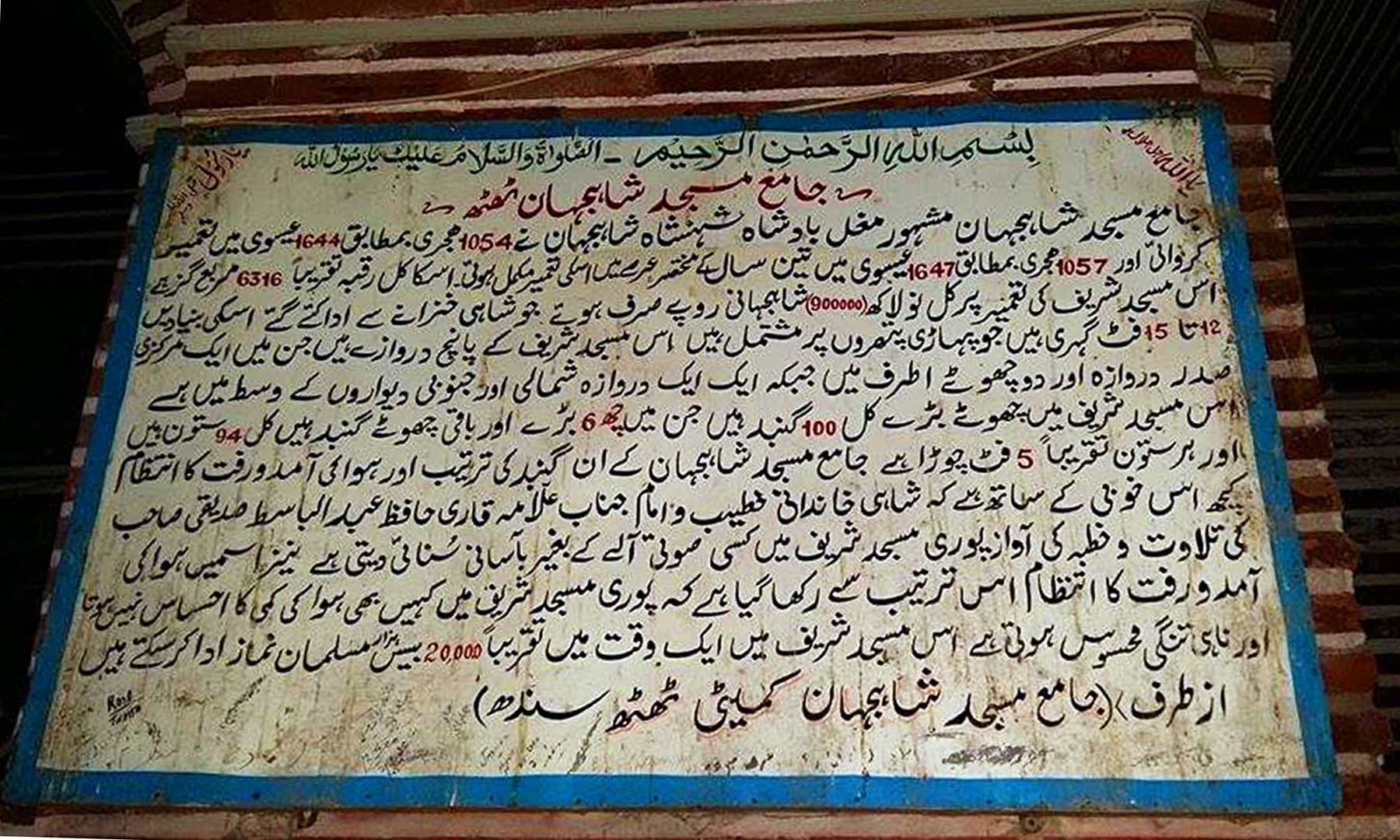Shahjahan Mosque: Thatta's timeless splendour
It was a beautiful evening when I arrived; silent, with the sun about to set, birds wandering in the sky, and the presence of just a few visitors. The carpeted road and the greenery around reminded me of the song “Dharti sunheri ambar neela”.
I was in Thatta’s Shahjahan Mosque, an enormous, beautiful structure which bespeaks the glory of its era.
Crossing the passage that leads to the courtyard, I passed by a number of stalls selling gola gandas and chaat. The garden tells a sad story of ignorance. But when I entered the mosque, I was hypnotised.
 |
| The mosque's main entrance. |
 |
| Archways in the courtyard. |
 |
| The unique artwork known as Kashee is popular in Hala and Multan. |
What a breathtaking building. I sat down in the main courtyard and just looked at it, its walls telling me stories of another time – the good times; and also the ruthlessness of time.
Located in Sindh's historic town, Thatta, the Shahjahan Mosque is nearly 100km from Karachi and around the same distance from Hyderabad as well. Thatta has a large number of monuments that are among the UNESCO world heritage sites, including this mosque.
 |
| The mosque's history. |
The mosque was built, of course, during the reign of Mughal emperor Shahjahan as a gift to the people of Sindh for their hospitality. The foundation of the mosque was laid in the year 1644, and the construction was completed within three years.
The combination of red bricks and blue-colored tiles – imported from Hala, another town in Sindh – adds flavour to the walls. In all, the mosque has 93 domes (the largest number in Pakistan) and 33 arches.
However, here is a fascinating detail: It does not have a single minaret.
 |
| Artwork on the mehraabs. |
 |
| Domed chambers and archways. |
It was built with acoustic needs in mind, and a person speaking on one end of the mosque can be heard on the other end when the amplitude tops 100 decibels.
I wonder how, centuries ago, people managed to make such amazing architecture with such little access to technology and resources. From the ventilation system to the sound and the lighting, everything was so mindfully well-crafted.
The asha'ar in Farsi took me back to the time of Mughals. I was imagining the first visit of Shahjahan to this mosque along with his squad. How splendid it would have been; people chanting slogans and welcoming the king; the first azaan in the mosque.
In spite of the ravages of time and the utter neglect, the mosque still manages to retain most of the magnificence of its time.
 |
| Courtyard walls. |
 |
| Engraved stone pillars like these are also seen at many historical sites in Makli. |
However, comparing Thatta's Shahjahan Mosque with the emperor's other constructions – Taj Mahal in Agra, Red Fort/Delhi Fort/Lal Qila, the large section of Agra Fort, Jamia Masjid Delhi, Wazir Khan Mosque, Moti Masjid, Shalimar gardens, sections of Lahore Fort and the Jahangir Mausoleum – I felt sorry for its condition.
 |
| Intricate stone carvings that have survived the test of time. |
 |
| Tiles and brickwork: A brilliant combination of blue and red. |
There is barely any maintenance being done. The broken tiles hosted sparrow nests inside them and were a source of amusement for the kids. The domes were covered in spider webs. The maintenance work which does seem to be happening is not of the best standards. The material being used for reconstruction is poor. At night, the artificial lights (just a few green-coloured zero bulbs) paint a horrible picture, unlike the tremendous lighting system of Lahore’s Badshahi Mosque.
Ensuring maintenance and cleanliness should not be that difficult for the authorities. The wazu khana at least should be maintained in its original condition. The stalls in the garden need to be housed in a proper canteen. There should be a shop for handicrafts – Sindh's specialty. Officials must make regular visits to oversee the protection of this heritage. As should the media highlight it. All of these things are bound to lead to an increase in the number of tourists.
With the beautiful Kheenjhar Lake a few minutes away, a visit to the Shahjahan Mosque is well worth one's while.
Qazi Anum Naeem is a physiotherapist with a keen interest in exploring new places, particularly Pakistan's archaeological sites.



